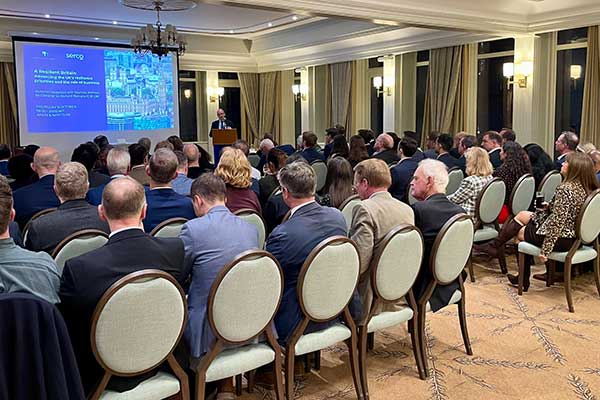George M. Karagiannis, Risk and Resilience Program Director
On New Year’s Day, a 7.6-magnitude earthquake struck central Japan, causing damage to buildings and infrastructure, starting fires, and leading to more than 40 deaths. The earthquake was ranked at the highest level on Japan’s intensity scale at its epicenter, yet, seconds after the shock, the residents and visitors along the coast began receiving tsunami alerts on their cellphones, on billboards, on TVs, on highway signs, and other platforms. Approximately 10 minutes after the earthquake, the first wave hit the coast with heights reaching 1.2 meters. Subsequently, the tsunami warning was downgraded, but this arguably helps to demonstrate the value of early warning systems.
Climate change is increasing both the frequency and severity of natural hazards, while altering the distribution of extreme events. Additionally, it is creating new compound dynamics that are exacerbated by societal and organisational vulnerabilities. At the same time, urbanisation and economic pressures are exposing more individuals to the deadly forces of nature.
Modern crisis management doctrine emphasises public information and warning as core functions in emergency response. In many industrialized countries, including the UK, employers are required to develop and maintain emergency action plans and employee alert systems. As supply chains and work patterns have evolved, so have the requirements for effective alert and warning systems. A few decades ago, simply tuning in to the local radio weather channel would have sufficed for businesses to receive warnings about approaching storms. However, in today’s globalised economy, where supply chains span across the entire world, businesses rely on the warning capabilities of countries in the antipodes of corporate headquarters. Similarly, until a few decades ago, a siren or a public announcement system may have been sufficient to alert employees about fires or similar plant emergencies. But in today’s increasingly remote working environment, where (at least partially) remote work is becoming the norm, and with new threats emerging, organisations require technologies and processes that can deliver lifesaving and time-sensitive information to stakeholders across different geographies.
Early warning systems are disaster and crisis response functions common to nearly all types of hazards and threats, which are needed for holistically managing cascading, compound, and interconnected risk. These systems encompass disaster risk knowledge, hazard detection and forecasting, public warning, and preparedness. They reduce disaster mortality and the number of affected people. According to the United Nations Office for Disaster Risk Reduction estimates even just 24 hours of warning ahead of an impending storm or heat wave can lead to a 30% reduction in losses. Yet, despite being widely acclaimed for saving lives, early warning systems are only available in half the countries worldwide.
This growing need for effective early warning systems for disaster resilience and critical infrastructure safety has been recently emphasized by international organisations and national authorities. At COP27, United Nations Secretary-General Antonio Guterres launched “Early Warnings for All”, an Action Plan supported by 50 countries, which aims at achieving universal coverage through multi hazard early warning systems by 2027. Advancements in science and technology have led to improvements in forecasts, especially lead times. While progress has been made over the last decade, coverage remains below 50% in the most vulnerable parts of the world. Despite advances in connectivity, last-mile outreach, or the communication of warnings, is often identified as a persistent gap.
Resilience First, in collaboration with the International Coalition for Sustainable Infrastructure and University College London, has embarked on an exciting new project, titled “From perceptions to saving lives: using the World Risk Poll to design multi-hazard early warning systems”. This project will operationalise the World Risk Poll by conducting statistical analysis of the Poll data to identify factors that influence people’s choice of and trust in sources of disaster-related information , as well as levels of individual and household preparedness.
We envision this project to be an opportunity to connect, learn from, and provide feedback to the global resilience community. We welcome input from emergency management, business continuity, and organisational resilience professionals involved in designing and implementing early warning systems worldwide, as well as policymakers who bear the responsibility of protecting their constituencies. At the organisational level, we value input from government emergency management agencies, critical infrastructure owners and operators, and businesses around the world. We believe they can all benefit from the knowledge of early warning systems that this project endeavours to develop.
To find out more about this project, get in touch with us at contact@resiliencefirst.org.



